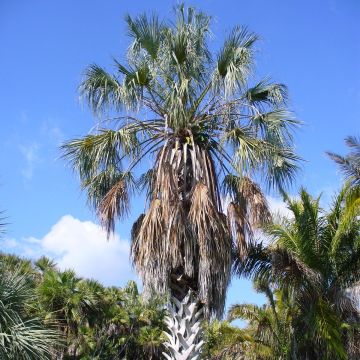Sabal
Would this plant suit my garden? Set up your Plantfit profile →
Available in 4 sizes
Available in 2 sizes
Available in 3 sizes
Available in 3 sizes
Available in 1 sizes
Available in 1 sizes
Available in 1 sizes
Available in 1 sizes
Available in 1 sizes
Available in 1 sizes
Available in 1 sizes
Available in 1 sizes
Sabal are very beautiful palm trees with large fan-shaped leaves, still not very common in our gardens, despite their good resistance to cold and ease of cultivation.
Slow-growing but long-lived, tolerant, and of variable size, sabals are reliable choices that charm with their original trunk and their large palmate leaves, rigidly assembled into a beautiful three-dimensional crown. The genus Sabal, from the family of Arecaceae, and rich in 15 species, became known through the majestic bush palmetto, the cabbage palm from Florida, but also through its cousin, the small sabal, of modest size, hardy down to -15°C (5°F), very well adapted to our small European gardens. Finally, these palm trees flower quite young, in the form of large and highly branched fragrant inflorescences, followed by small black and globose fruits. The first five years of cultivation are crucial for establishing a young Sabal: slow to establish, requiring careful care, it will no longer cause any worries for the gardener once well established.
Haven't found what you were looking for?































































